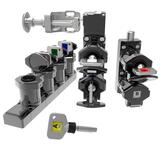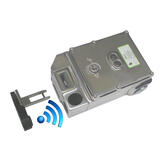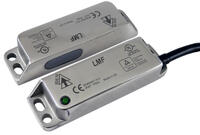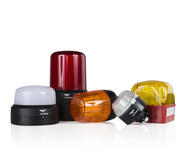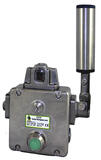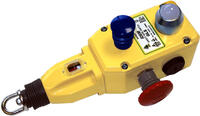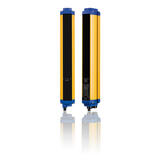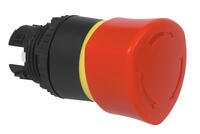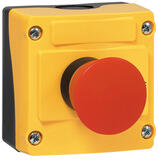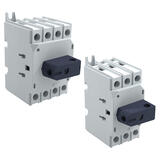Machine safety is central to any manufacturing process and is one of the highest priorities for machine builders.
This guide by OEM Automatic focuses on the importance of machine safety in manufacturing and how you can increase machine safety in your conveyor system. Conveyor systems may be simple, but it's essential that they are safe.
We look at the types of safety to consider, from access and prevention to emergency stop solutions for the conveyor.
Anyone creating or enhancing a conveyor system could benefit from this guide. We hope it gives you an idea of what components can be used for the conveyor system and production line.
Machine safety is sometimes known as safeguarding or protecting users from potential hazards.
It's not just users who have to be protected. Components within machinery also need to be protected from potential hazards.
Read on for more about safety components mounted inside and outside of the machinery.
A conveyor system contains a moving belt which automatically transports items and objects from one place to another. They are used in a wide range of industries, from fruit inspection to airport security.
The UK's Health and Safety Executive reports that 30 per cent of all injuries caused by machinery involve conveyors. Injuries are caused mainly by trapping points, but there are other causes too.
Safety must be considered in every aspect of production to ensure a safe and compliant working environment. Manufacturers must abide by safety rules given by the government. The HSE has produced a useful guide on do's and don'ts of machinery safety for workers.
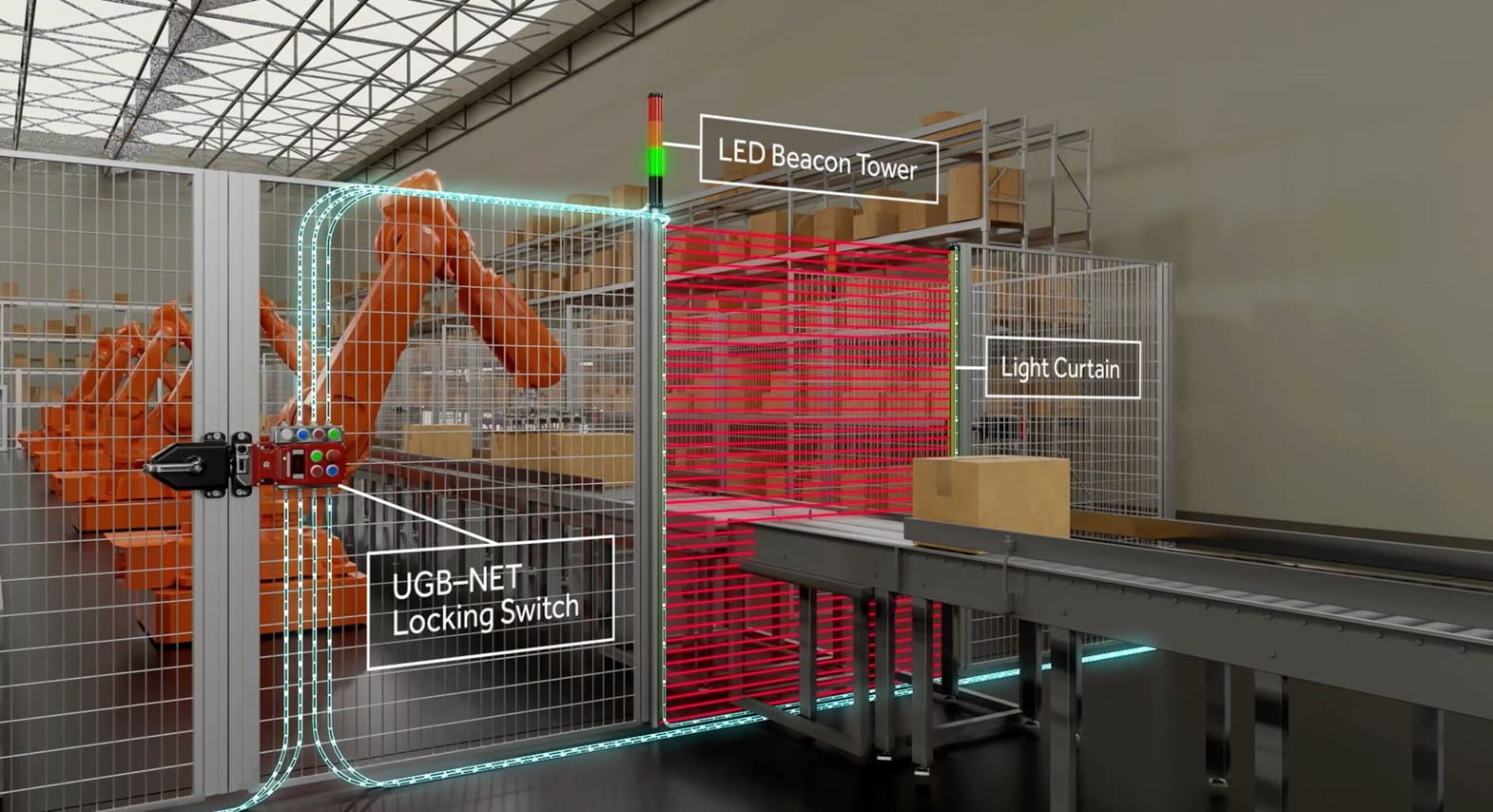
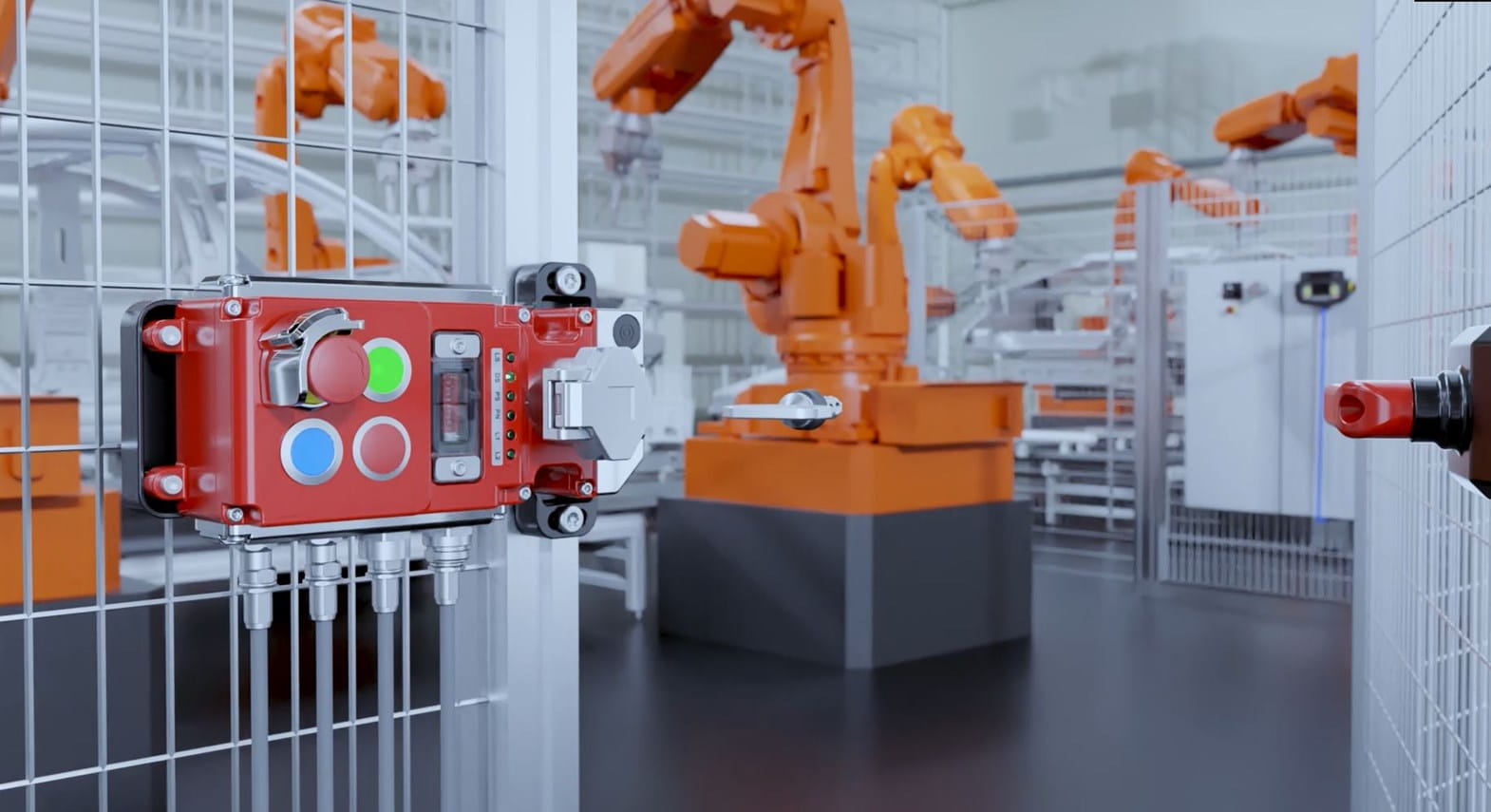
Many components comply with the standards above or help to aid safety. Here are some examples of different types of machine safety to consider for your conveyor system.
The following machine safety components can help prevent danger whilst maintaining security.
Trapped key interlocks are used to ensure safe access to the conveyor system. Trapped key interlocks are a way of isolating machinery before someone can enter the dangerous area and are inherently reliable, as a person must go through the correct sequence to gain access.
Solenoid interlocks are a useful alternative to trapped key interlocks and can be used for door interlocking and monitoring. Depending on the application, you may choose trapped key interlocks, solenoid interlocks or both.
Non-contact safety switches can be used to detect when the door to the hazardous area has been opened and sends a signal to stop the machine.
Beacons and audible bases can be used to aid humans near the conveyor system, as they are alerted by specific colours and sounds that prevent, give access or simply indicate any issues.
Many safety components can be used to monitor or guard conveyor systems, and then send signals to other components to stop the system when it is hazardous or unsafe.
Belt alignment switches monitor and detect when a conveyor belt has become misaligned. This can help prevent the conveyor from potentially causing harm to products, operators or the conveyor itself.
Safety rope pull switches are an essential component of conveyors. They are designed to be mounted onto sections of conveyors which cannot be protected by guards. Safety rope switches initiate the emergency stop command and provide rope pull protection for exposed conveyors.
In some cases, components trigger early action to stop the whole system.
Safety light curtains can be installed alongside or above a conveyor belt. If an object/person passes the safety light curtain, the machine stops. These curtains are available in differing heights and resolutions and can detect fingers, hands or people. Safety light curtains do not block access to a machine as a physical barrier would do.
Safety edges are typically used for industrial gates and doors but can also be used on adjustable lift tables/platforms and transfer cars within conveyor systems. When there is contact with the safety edge, the system can trigger an emergency stop.
Emergency stops (e-stops) are essential in conveyor systems and are commonly used for machinery. Plus, they are a reliable stop device where workers are nearby or physically working on the conveyor.
Where should e-stops be located? E- stops should be located so that the operator can easily access and operate them in the event of needing to stop the conveyor instantly.
Machine stop mushroom heads can be used in less safety critical applications, depending on the risk assessment of the machinery. When the mushroom head is operated it latches into place causing the machine to stop. Depending on the product selected, a deliberate pull, turn or key reset action is required to manually reset the mushroom head.
You can use illuminated or non-illuminated options, and all conform to the relevant EN standards, and UL approved.
Emergency stop mushroom heads look very similar to above but there is a fundamental difference. They have a mechanical, snap action design that makes it impossible to operate the contacts without fully activating the mushroom head. Additionally, a yellow ring is only visible when the mushroom head is not activated allowing easy identification of the head status.
This is stipulated in the standard ISO 13850:2015 and there is a range of options that fully comply.
Safety components are also incorporated within the control panel.
Safety relays, safety controllers and safety PLC's monitor safety devices like emergency stop mushroom heads, safety switches and all the other machine safety components we've talked about above.
Switch disconnectors are used to power down an electrical circuit safely which may be done, for example, for maintenance reasons. They are an essential electrical part of the machinery and make it safe for the user carrying out maintenance within the electrical panel.
The above components are just a small selection of products we at OEM Automatic sell.
If you are interested in machine safety solutions for your conveyor or machinery, contact [email protected]. The team would be pleased to work with you to find solutions for your system.
